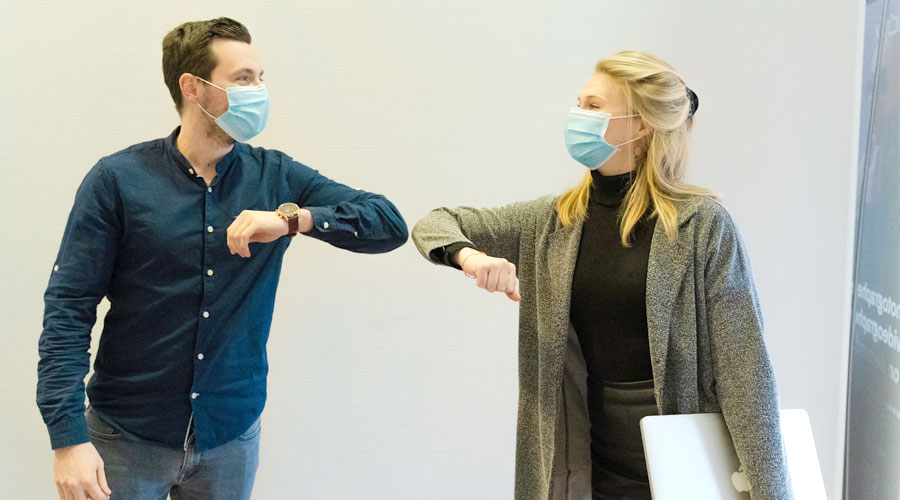
How To Approach Safely Returning to Work
During the COVID-19 pandemic, two-thirds of Canadian businesses had at least 60 per cent of their employees working remotely. As more Canadians get vaccinated, organizations should have a plan in place to safely return to the office.
The following should be considered to return to on-site working safely:
- Mask policy—For employees, the policy should be in writing and easily accessible. For consumers of commercial and retail businesses, clear signage regarding mask policies should be located near all entrances. Seeking legal assistance when preparing a mask policy is wise, and legal counsel can help employers navigate medical and other exemptions.
- Sick pay program—By offering a sick pay program, employers can encourage workers to take time off when they are sick to keep the spread of germs around the office to a minimum. Offering a sick pay program will help employees not feel obligated to work while under the weather.
- Minimized contact—Studies reveal that COVID-19 typically spreads when people are in close contact for long periods of time. To minimize physical contact while in the office, organizations should consider one-way walking patterns, fewer lounge areas and more space between desks.
- Hybrid work arrangements—Implementing a hybrid work arrangement gives employees the flexibility to work both at home and in the office throughout the week. Limiting the number of employees in the office at a given time can help with social distancing and limit the spread of germs.
As workforces return to the office, employee health and well-being should be a top priority for organizations. Having policies and procedures in place will make the transition back to the office as safe as possible.
Understanding Return-to-Work Risks for Remote Sites
Returning to work in the wake of the COVID-19 pandemic may prove especially challenging for remote sites, as they offer their own set of risks compared to the typical office setup.
Some challenges remote worksites may face include:
- Limited access to health care—COVID-19 outbreaks at remote worksites can be made more severe by a limited access to health care. Vessels and other moving remote locations may have varying levels of access to hospitals and other facilities. A limited access to health care also means limited access to testing, screening and vaccinations.
- Confined spaces—Confined working and living conditions can cause a COVID-19 outbreak to spread through a worksite quickly. In addition, some remote worksites don’t have the space to isolate sick employees.
In order to ensure that COVID-19 does not occur at or spread through a worksite, remote workplaces can take these extra precautions:
- Pre-deployment quarantine—To minimize the possibility of a COVID-19 outbreak, organizations should ask employees to quarantine prior to deployment, as well as screen for symptoms—such as fevers—upon arrival.
- On-site controls—On-site controls can help keep the spread of germs to a minimum. These controls can include screening workers before they enter a shared workspace, cleaning rigorously, and utilizing face coverings and hand sanitizer.
- Isolation locations—Organizations should be prepared for an outbreak by creating an isolation location. This can be used for employees who test positive for COVID-19 and need to complete the Health Canada recommended 10 days of isolation.
By understanding return-to-work risks for remote sites, organizations can better prepare for preventing and dealing with a COVID-19 outbreak.
For more information on risk management, or to find out how to reduce your insurance costs call CMB at 780.424.2727 or click here to get a quote.
